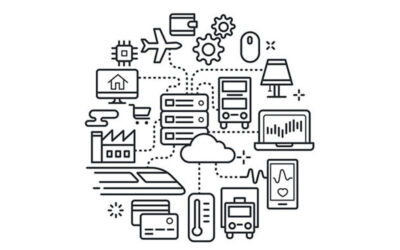The rapid adoption of remote work is an exciting development across the globe. While there are some hurdles to clear in establishing a successful remote workforce, companies that utilize one have the ability to garner the best talent, regardless of location. When workers don’t have to physically commute, they can do the same great work from much farther distances. A Georgia-based company can work with an employee in Vermont without her having to fly back and forth every day.
That all makes sense, but how do you run a successful remote operation? Well, if you already have one, congratulations! You’ve taken the first big step, and surprisingly, you’re already on the way to being successful. That’s because working from home is a desirable option for many Americans, 75% of whom prefer to work remotely “at least occasionally” according to a recent IBM survey. Happier employees are more productive employees, so having remote work be at least an option may offer a helpful morale boost.
But you can’t stop there and be successful, just as you can’t stop at buying a box of pancake mix. No, there’s still a lot of work to be done. For instance, if you haven’t got milk and eggs to add to the mix (and maple syrup, of course), you won’t have a very tasty breakfast at all.
But we’re not talking about breakfast. We’re talking about make remote work, work. So, what are successful workforces doing?
- They have in-depth policies. For everything. They outline who’s eligible to work from home, what they’re expected to do from there, what procedures for working securely they need to follow, and what consequences for non-compliance are.
- They foster communication. Remote workforces who communicate infrequently are doomed to fail. Give both remote and in-house employees user-friendly technology they need to seamlessly communicate. VoIP is one excellent option.
- They make security a priority. Remote work creates new challenges for keeping your data secure, but successful companies address these with the best practices and solutions, acting before data breaches can happen. (Where are the holes in your remote security?)
- They utilize the best tech. Be it for strong communication, secure corporate network access, or streamlined workflow, they don’t skimp on technology. They understand that investing in the easy-to-use devices and apps that employees need drives productivity.
- They are carrying on as normal. Or as normal as possible during a pandemic. If they had regular meetings before, they find ways to keep those going. They find ways to check in on employees’ progress even when though the boss isn’t down the hall.
- They empower employees. Micromanaging is not only hard to do remotely, it destroys productivity, wastes time, and annoys employees. Creating extensive SOPs (standard operating procedures) for normal business operations gives workers autonomy so they don’t have to involve the boss for every decision.
- They document everything. Paper trails are a lifesaver in the age of digital work. This can include emails and instant messages in addition to traditional documents like agreements and memos. Team members can collaborate on task management apps to see what’s been done already and who’s been contacted.
- They look for places to improve. Using key performance indicators (KPIs), they can compare actual achievements against business objectives. They also regularly train employees to improve security awareness and job efficiency, among other things.
- They leave room for fun. Whether it’s a virtual happy hour every Friday afternoon or making time for a little “watercooler chat,” they remember to be social. A little camaraderie can go a long way to boosting spirits.
- They ask questions. That’s right. No one has all the answers, and they know that. They ask employees what’s working for them and listen to their answers. They ask questions of their business and their industry, identifying opportunities for change. And they look for outside help from experts when they need it.
Companies that are utilizing successful remote workforces know that they are ahead of the curve—but not for long. Twitter recently announced that all of its employees can permanently work from home if they wish, and others have followed similar paths. Before long, the business landscape could look utterly different. Perhaps it already is. The last three months have shown us just how resilient American businesses and workers can be in times of crisis.
As you expand your work from home arrangements, we’re here to help. We stand ready to help you fully implement practices of a successful remote workforce. Identifying and patching the holes in your remote security is our specialty, and your future self will be thanking you for enlisting expert help in these changing times. Let us share how we can help improve your current remote workforce setup by contacting us at here or by calling (508) 453-4700.



